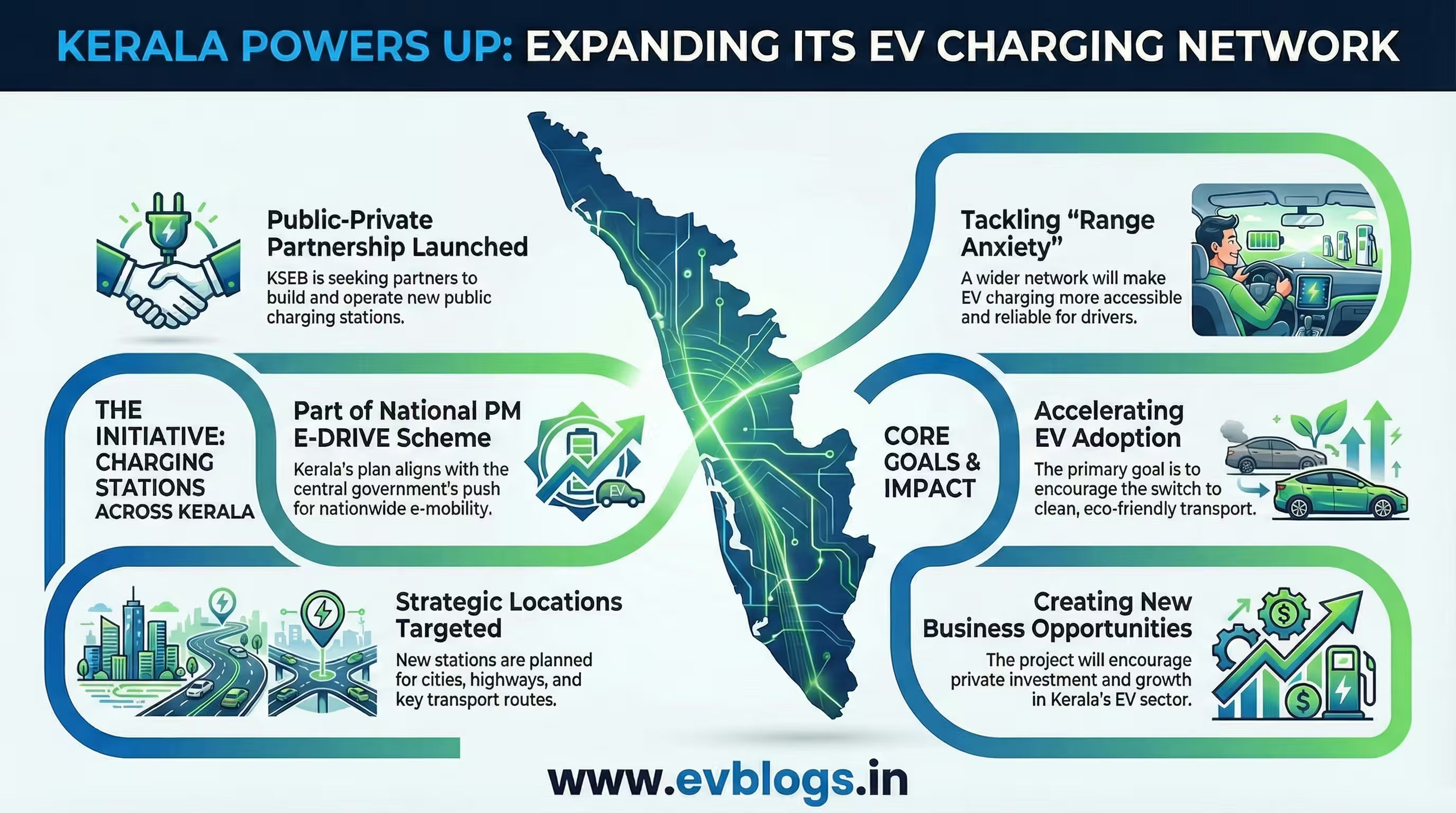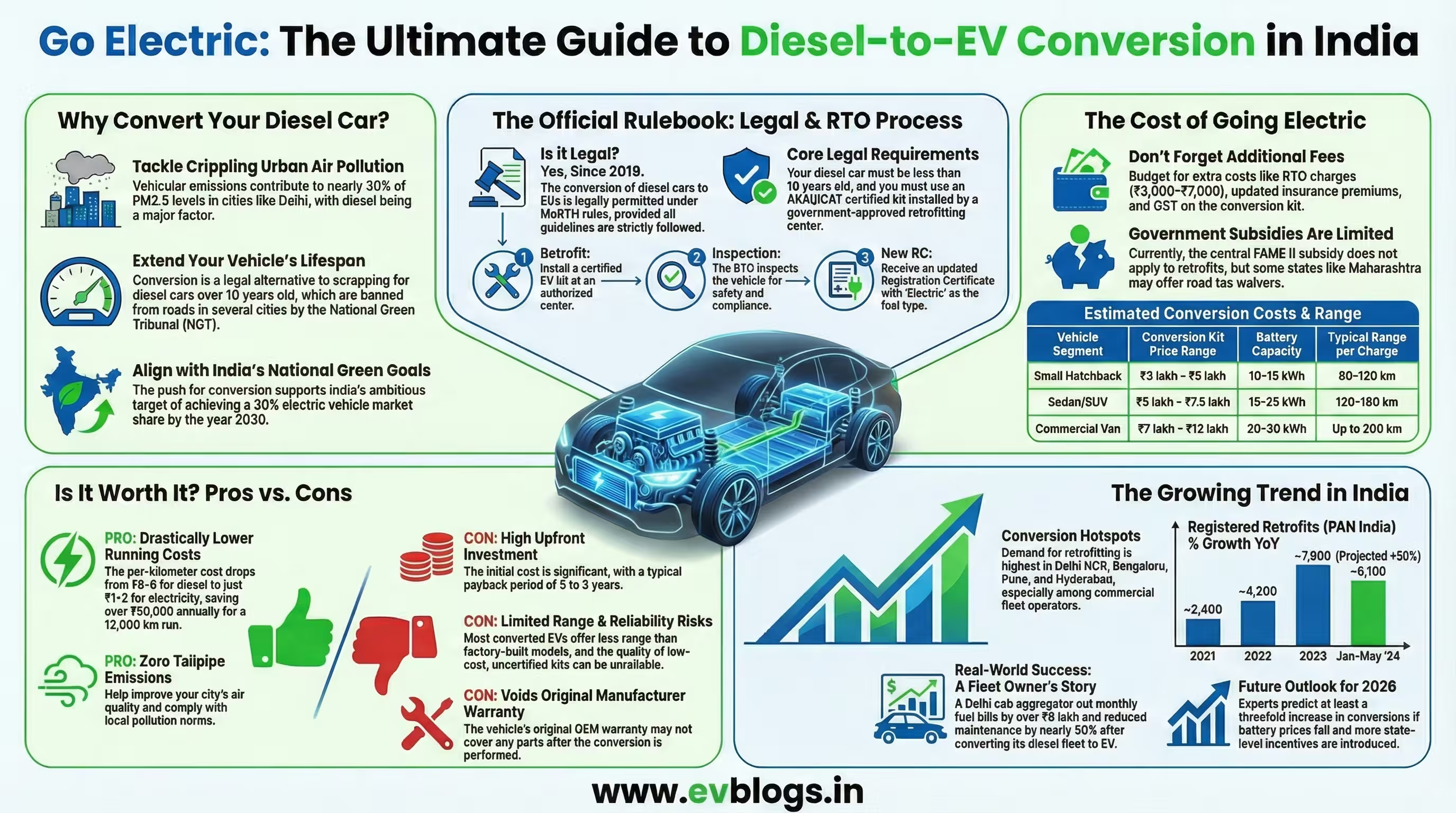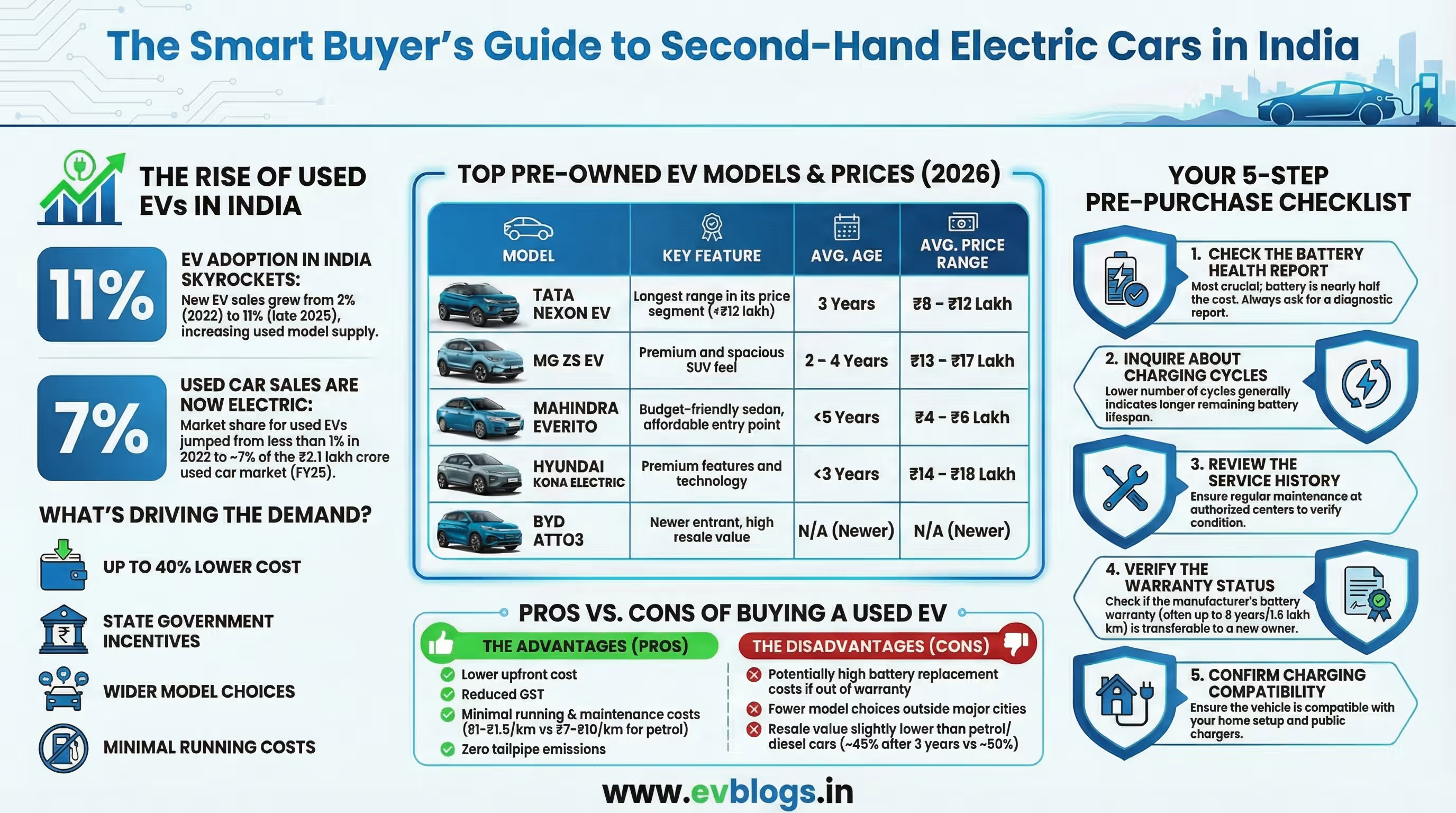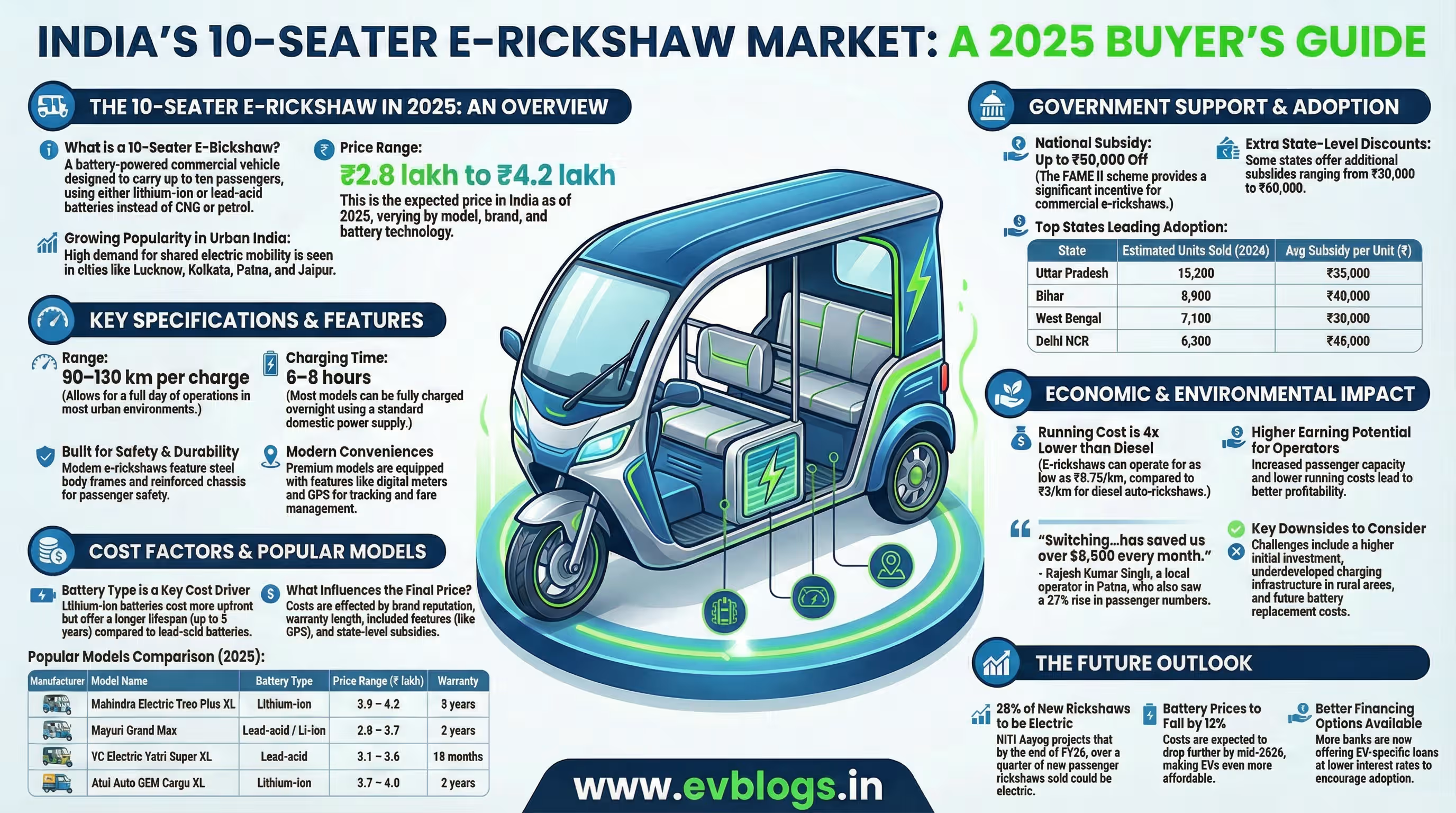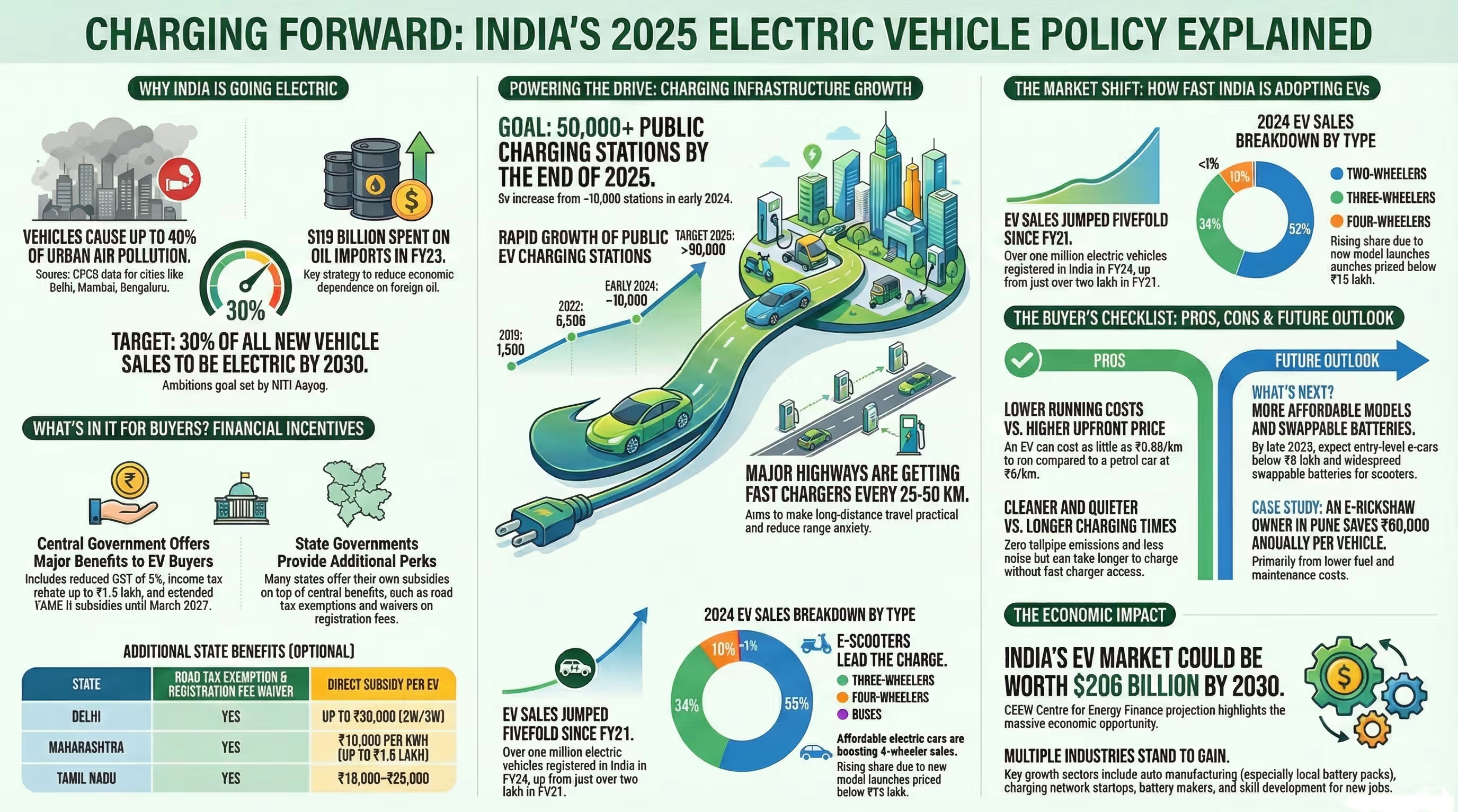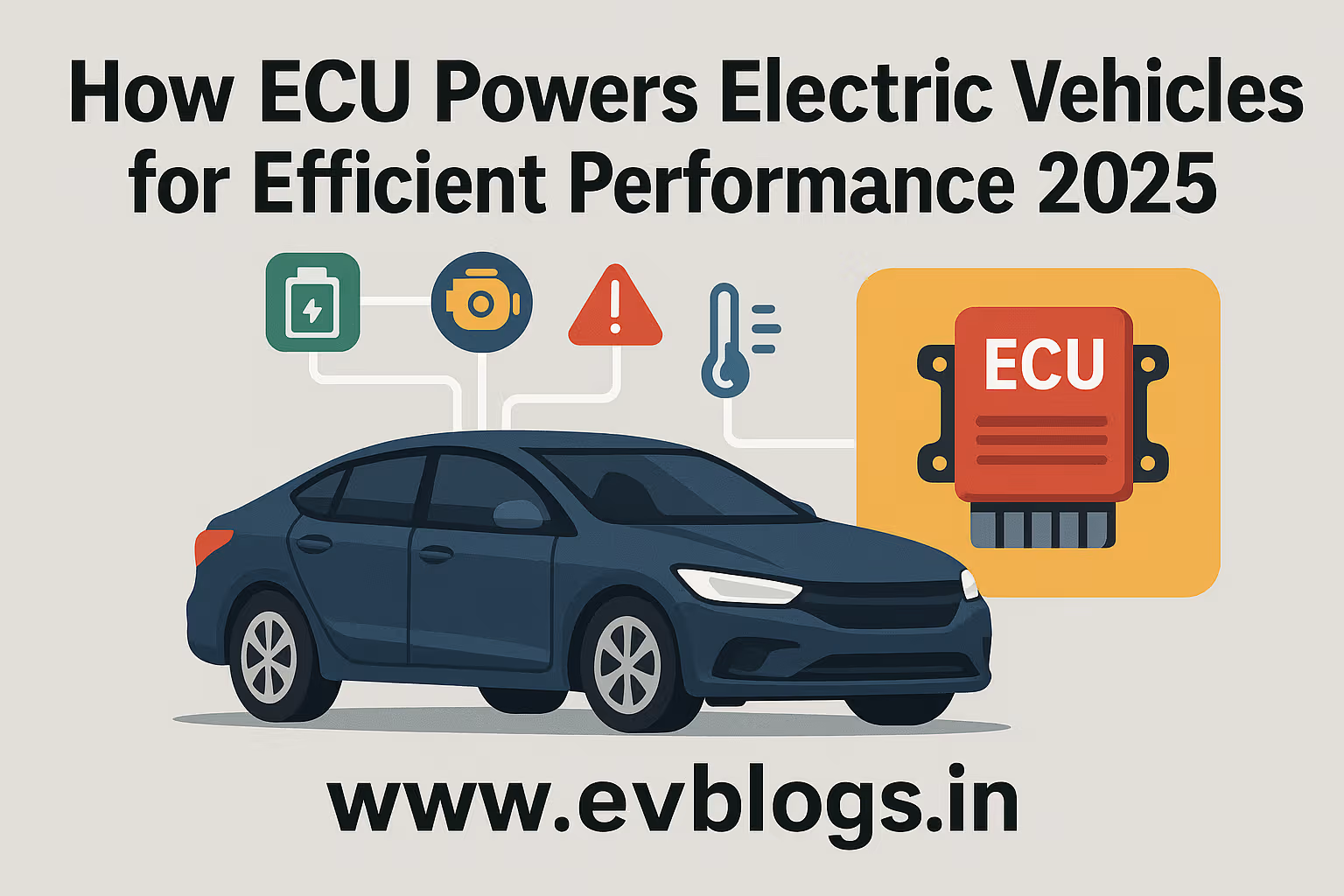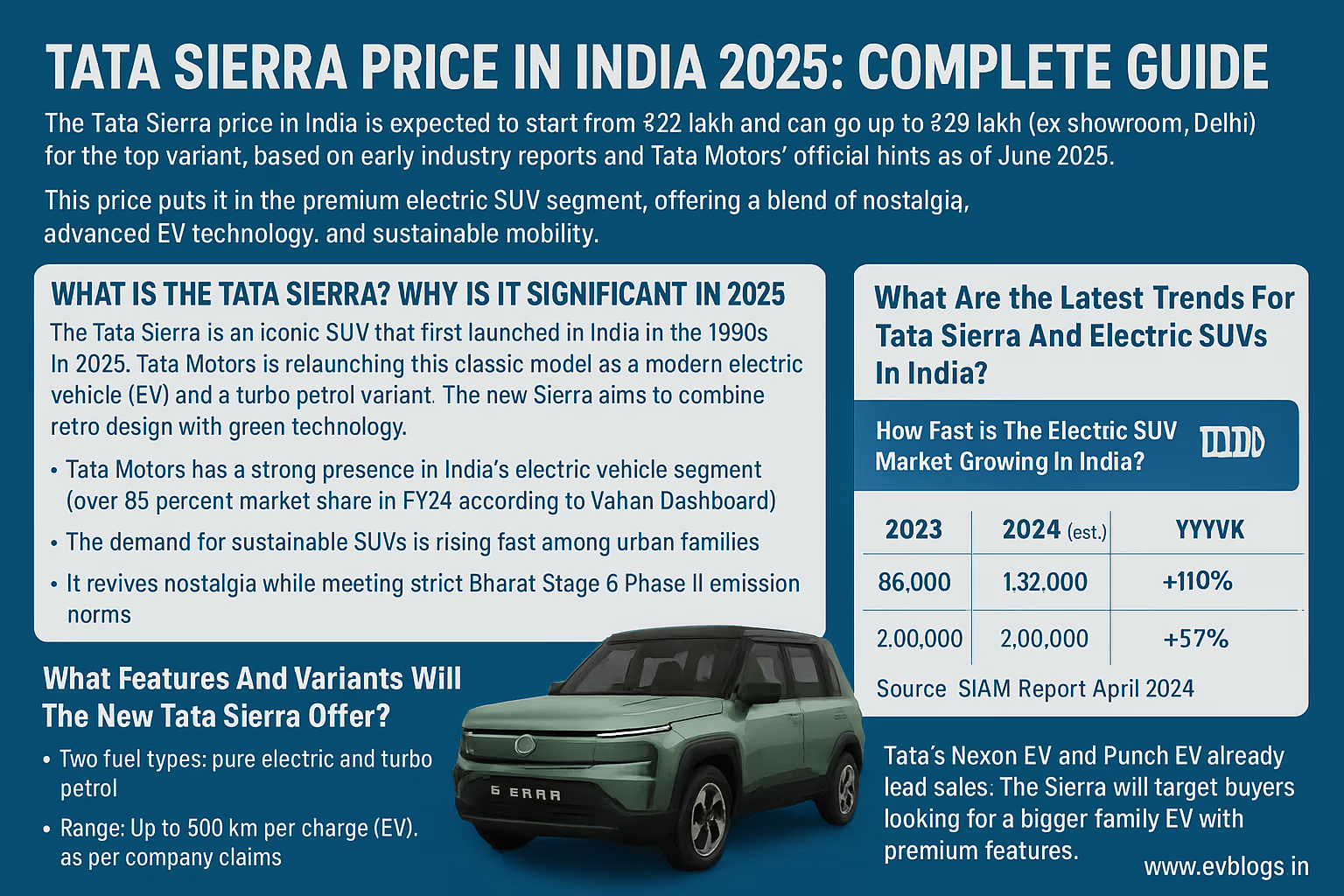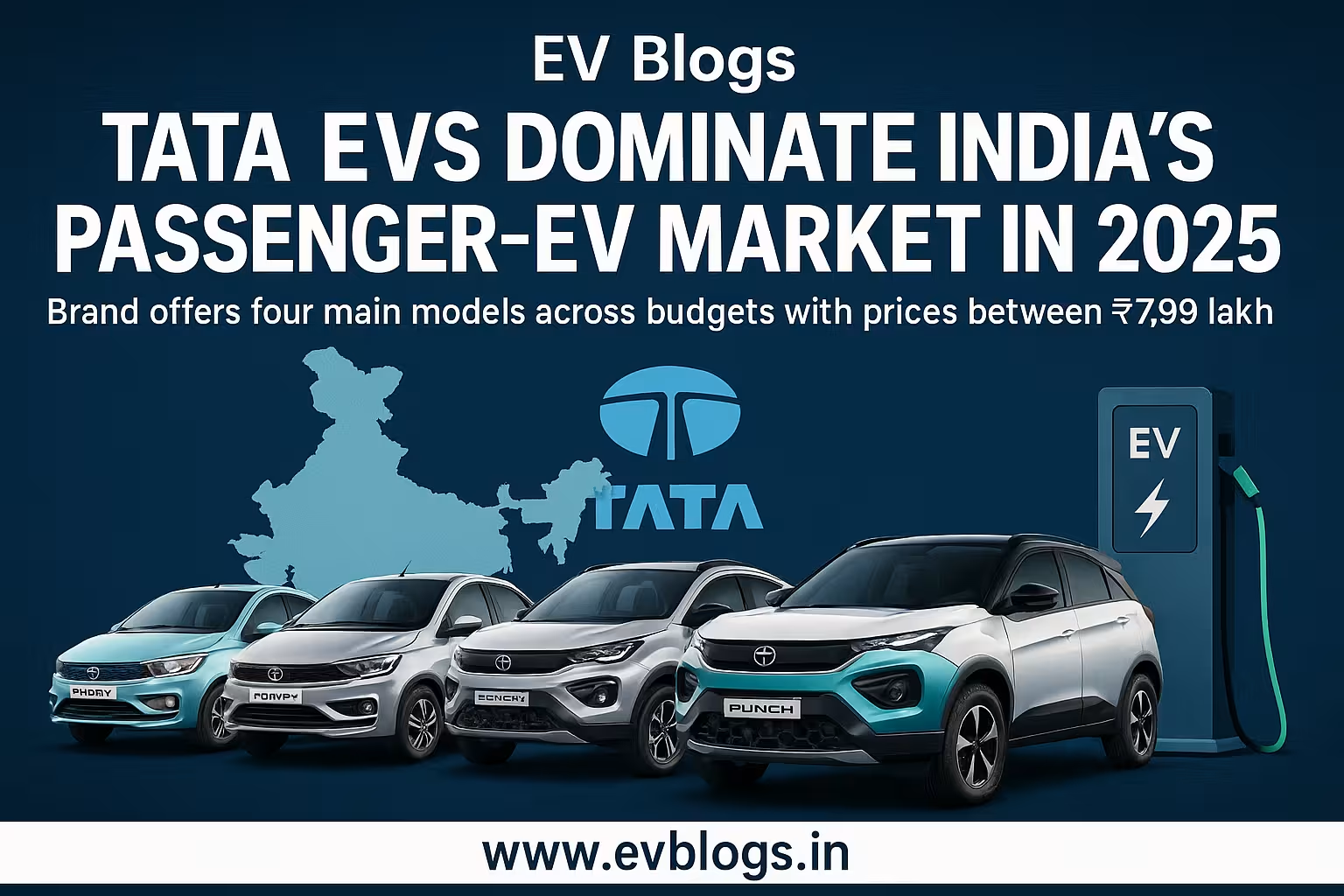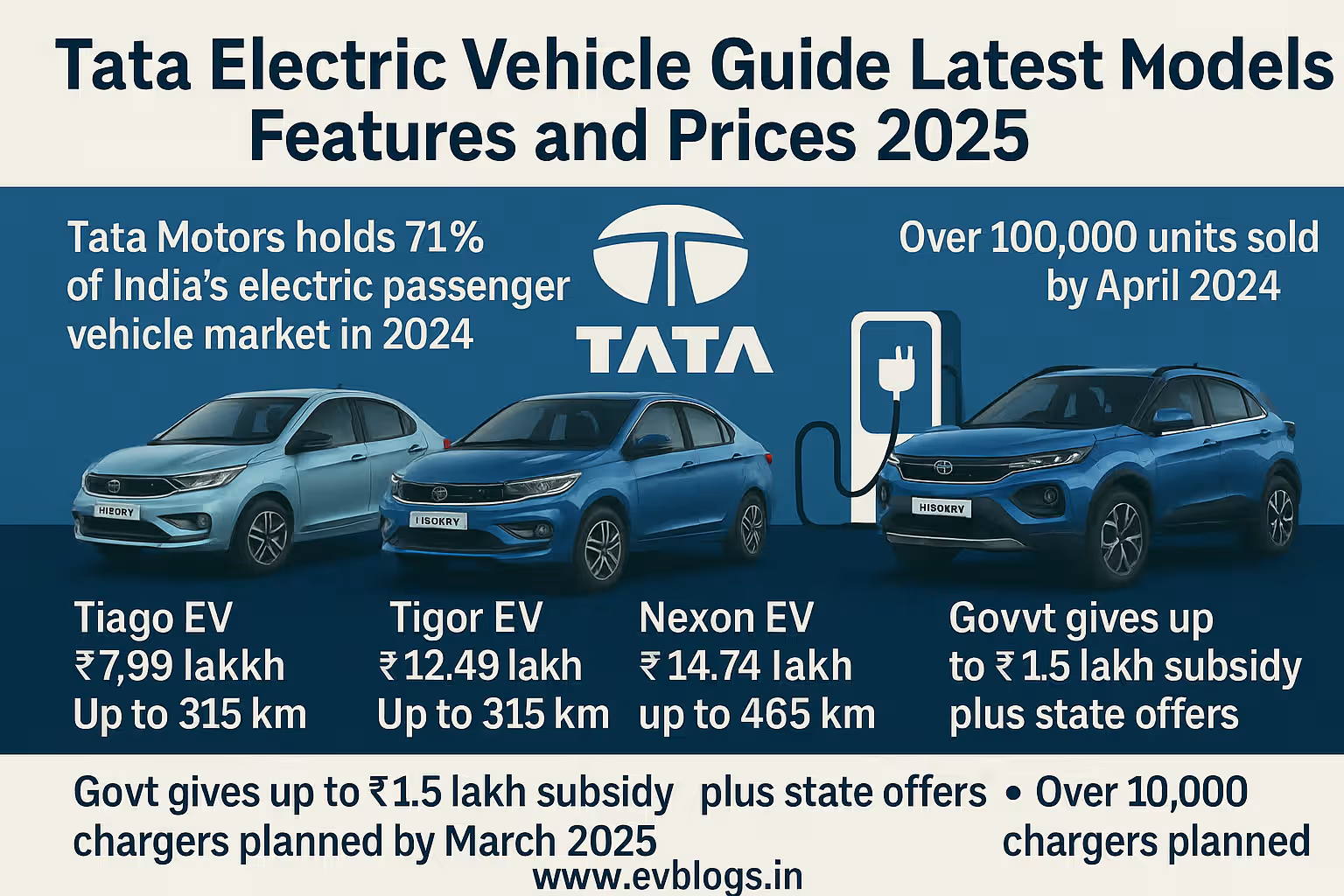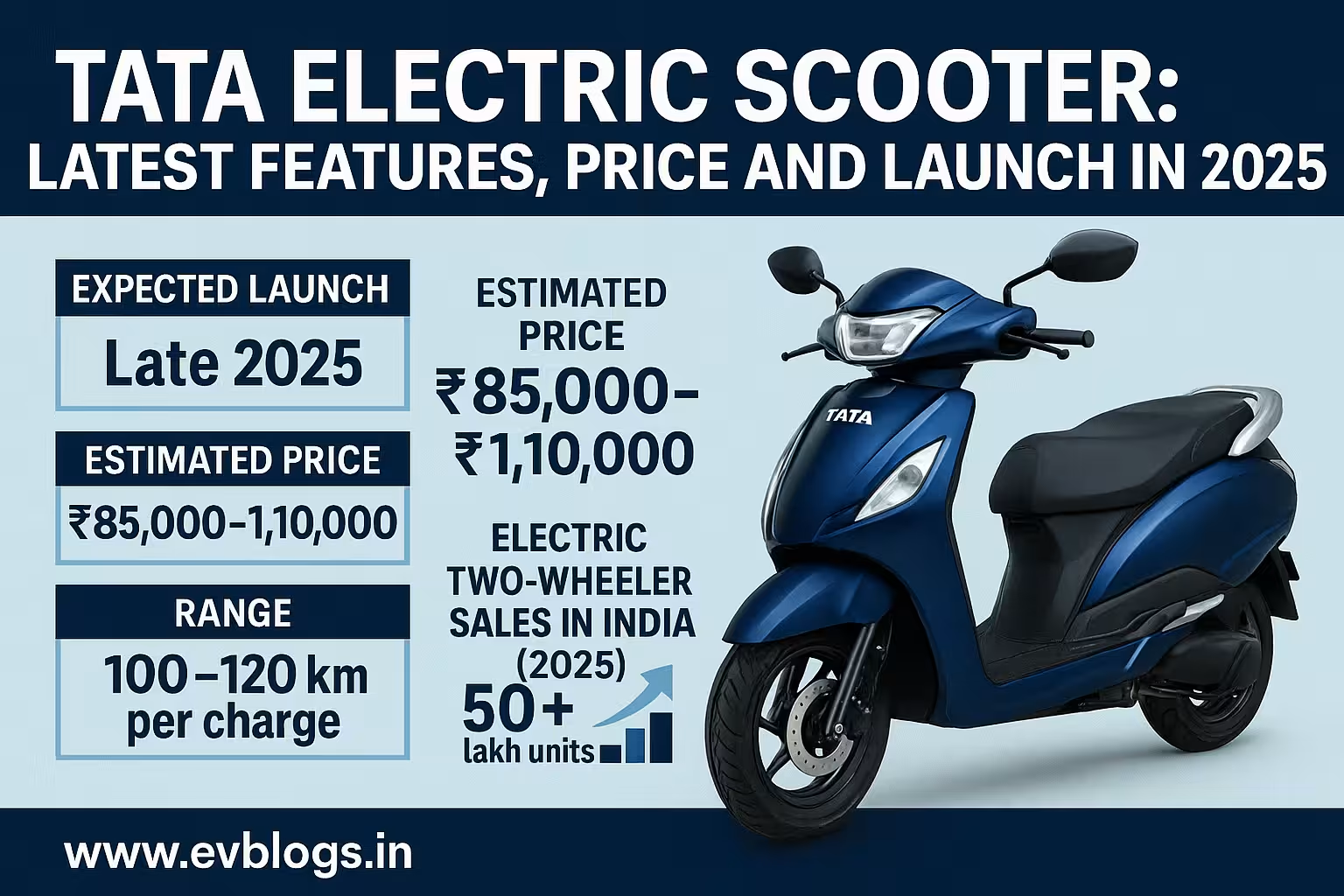Hedhvick Hirav
Hedhvick Hirav is a dedicated EV researcher and editor with over 4 years of experience in India’s growing electric vehicle ecosystem. Their contributions have been recognized in leading sustainability publications and automotive journals.
Summarize & analyze this article with
Choose an AI assistant and open this article directly:
Tip: if the AI doesn’t fetch the page automatically, paste the article URL manually.
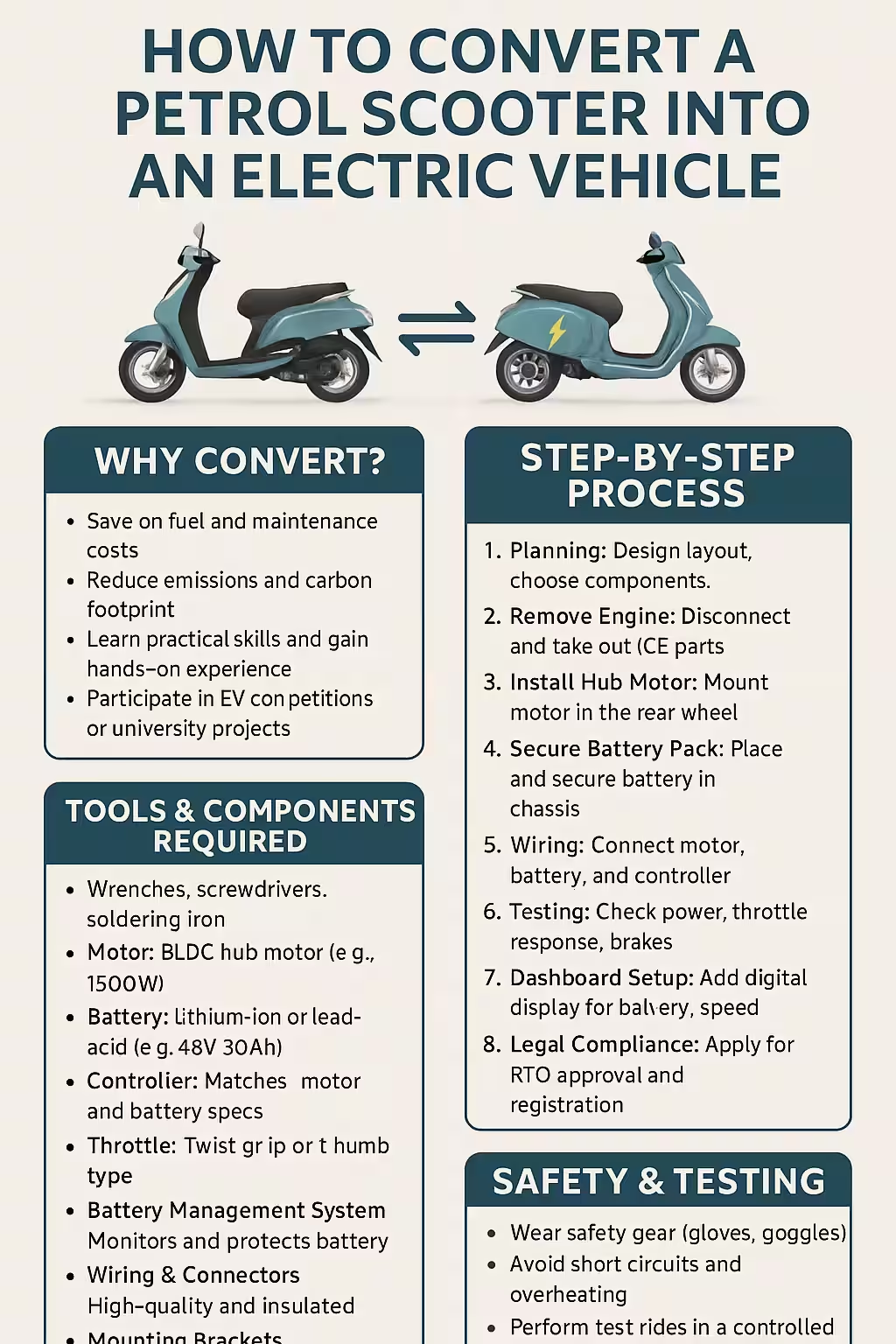
What Does It Mean to Convert Your Petrol Scooter to an Electric Vehicle in India?
With the push for cleaner air and the rising costs of petrol, converting your old petrol scooter into an electric vehicle (EV) is now more popular than ever in India. By doing this, you keep your existing scooter but replace the petrol engine with an electric motor and batteries. This transformation is not only eco-friendly but can also save you money over time.
- In 2025, it’s estimated that over 10,000 petrol scooters in India are being converted to electric each month.
- The government supports these conversions through FAME-II subsidies and local incentives in cities like Delhi and Bengaluru.
- Converting helps you cut down maintenance and fuel expenses, reduces pollution, and extends the life of your scooter.
Did You Know? In major Indian cities, petrol scooter conversions can reduce your daily commuting cost by up to 85% compared to using petrol!
Why Should You Convert Your Petrol Scooter to Electric in 2025?
Switching to an electric scooter brings multiple benefits. Not only do you help the environment, but you also make your daily commute quieter, smoother, and cheaper.
- Petrol prices in India touched ₹120 per litre in June 2025, making daily commuting expensive.
- Electric scooters, after conversion, can run at the cost of just ₹0.15–₹0.30 per km.
- Maintenance costs drop by approximately 60% due to fewer moving parts in electric motors.
- Major Indian cities are introducing green mobility zones, where only EVs are permitted.
Reasons to Consider Conversion:
- Save money on petrol and maintenance.
- Support India’s push for a cleaner, greener future (targets of 30% EV adoption by 2030).
- Avoid future bans on petrol vehicles in urban areas.
- Enjoy a quieter, low-vibration ride.
Expert Insight The Indian government is planning to extend incentives for retrofit kits until at least December 2025. This may save you up to ₹15,000 on your conversion!
When Is the Right Time to Convert Your Petrol Scooter to Electric?
Timing your petrol-to-electric conversion is important to maximize value and minimize hassle.
- The best time is when your scooter’s petrol engine is aging (over 4-5 years old) but the body and chassis are still solid.
- If your daily commute is under 60 km, EV conversion pays off within 1-2 years.
- As more cities implement low-emission zones (expected in 20+ Indian cities by December 2025), conversion becomes a smart move.
Ideal Situations for Conversion:
- You want to avoid buying a new expensive EV.
- Your scooter has sentimental or practical value.
- Petrol prices and emissions rules are becoming a burden.
Did You Know? In Delhi NCR, over 40% of two-wheelers are more than 8 years old. Retrofitting can extend their useful life without polluting the environment further.
Which Petrol Scooter Models Can Be Converted in India?
Not all scooters are suitable for conversion, but most popular Indian models can be retrofitted with an electric kit.
Popular Convert-Friendly Models:
- Honda Activa (all generations)
- TVS Jupiter and Scooty series
- Suzuki Access and Burgman Street
- Hero Maestro and Pleasure
- Yamaha Fascino and Ray
- Bajaj Chetak (old models, not the new EV)
- Vespa (select models)
- Mahindra Gusto
- Aprilia SR 125/150
- Honda Dio
What to Check Before Deciding:
- The scooter’s frame should be rust-free and structurally sound.
- The chassis must accommodate the weight and size of the battery.
- Older scooters (more than 10 years) may need extra frame strengthening.
Expert Insight Over 80% of scooters sold in India between 2010 and 2022 can be easily converted using standard Indian retrofit kits in 2025.
How Does the Petrol Scooter to Electric Conversion Process Work?
Converting your petrol scooter to electric involves a careful retrofit process performed by certified professionals or, in some cases, as a DIY project.
Main Steps in the Conversion Process:
- Assessment: A professional examines your scooter’s condition.
- Removal: The engine, exhaust, petrol tank, and fuel lines are removed.
- Installation: New electric motor, controller, and lithium-ion battery are installed.
- Wiring: Electrical connections for throttle, brakes, and dashboard are set up.
- Safety Checks: Brakes, lights, and wiring are tested.
- Certification: You receive a retrofitted vehicle certificate (mandatory in India).
Key Components Replaced or Added:
- Electric Motor (usually 1–2 kW for scooters)
- Lithium-ion Battery Pack (1.5–3 kWh)
- Motor Controller
- Throttle and Display Unit
- Wiring Harness
Conversion Time:
- Professional conversion: 2–4 days.
- DIY conversion: 1–2 weeks, depending on your skill.
Did You Know? In 2025, ISI-certified EV retrofit kits are required by law for insurance and registration, ensuring your scooter is road-legal.
What Is the Cost of Converting a Petrol Scooter to Electric in India (2025)?
The cost varies based on kit quality, battery size, and labor charges, but converting is usually cheaper than buying a new EV.
Average Conversion Costs (2025):
| Cost Component | Price Range (₹, 2025) |
|---|---|
| Retrofit Kit | 32,000 – 65,000 |
| Lithium-ion Battery | 22,000 – 40,000 |
| Labor Charges | 4,000 – 8,000 |
| RTO Certification | 2,000 – 4,000 |
| Total Estimate | 60,000 – 1,10,000 |
Key Points:
- Premium kits with longer range or faster charging cost more.
- FAME-II subsidies and local incentives may reduce the cost by ₹10,000–₹15,000.
- Maintenance cost after conversion drops to ₹500–₹1,000 per year.
Expert Insight Over 70% of Indian users recover the full conversion cost in 12–18 months due to savings on petrol and servicing.
Which Are the Best Electric Scooter Conversion Kits and Providers in India (2025)?
Choosing a reliable kit and installer is crucial for performance, safety, and warranty. In 2025, several providers offer government-certified conversion kits.
| Provider/Brand | Motor Power | Battery Type | Range (km) | Time to Install | Warranty | ISI Certified | Kit Price (₹) |
|---|---|---|---|---|---|---|---|
| GoGoA1 | 1.5 kW | Li-ion | 60-100 | 2-3 days | 2 years | Yes | 39,000 |
| E-Trio | 2.0 kW | Li-ion | 100 | 3-4 days | 3 years | Yes | 45,000 |
| Loop Moto | 1.2 kW | Li-ion | 80 | 2 days | 1 year | Yes | 36,000 |
| RACE Energy | 2.0 kW | Li-ion | 120 | 4 days | 2 years | Yes | 48,000 |
| Northway Motors | 1.5 kW | LFP | 90 | 2 days | 2 years | Yes | 42,000 |
| PureEV | 2.2 kW | Li-ion | 120 | 3 days | 3 years | Yes | 52,000 |
| Strom Motors | 1.8 kW | Li-ion | 85 | 3 days | 1 year | Yes | 38,000 |
| eBikeGo | 2.0 kW | Li-ion | 100 | 2-3 days | 2 years | Yes | 46,000 |
| Green Tiger | 1.5 kW | Li-ion | 70 | 2 days | 1 year | Yes | 33,000 |
| Cellestial | 2.0 kW | Li-ion | 110 | 3 days | 2 years | Yes | 47,000 |
Provider Details:
- GoGoA1: Most popular kit, widely available in 100+ cities, known for reliability.
- E-Trio: Focuses on higher range, robust after-sales support.
- Loop Moto: Suitable for older scooters, budget-friendly.
- RACE Energy: Offers fast-charging options.
- Northway Motors: Uses safer LFP batteries, good for hot climates.
- PureEV: Longest range and best warranty.
- Strom Motors: Quick installation, good urban performance.
- eBikeGo: National installation network.
- Green Tiger: Affordable, basic kit for city commutes.
- Cellestial: Focused on premium conversions and unique designs.
Did You Know? In 2025, over 60% of conversion kit sales occur in Tier 2 and Tier 3 cities, making EV adoption a pan-India trend.
How Does the Performance of a Converted Electric Scooter Compare to Ready-Made EVs?
Many users worry whether a converted scooter will match the performance, comfort, and reliability of a brand-new electric model.
Comparison of Performance in 2025
| Feature | Converted Petrol Scooter | New Electric Scooter (e.g., Ola S1 Air, Ather 450S) |
|---|---|---|
| Top Speed | 45–70 km/h | 65–95 km/h |
| Range per Charge | 60–120 km | 60–180 km |
| Charging Time | 3–5 hours | 3–6 hours |
| Warranty | 1–3 years (kit/battery) | 3–5 years (full vehicle) |
| Boot Space | May be reduced | Standard |
| Ride Quality | Similar to original | Tuned for EV comfort |
| Cost (₹, 2025) | 60,000–1,10,000 | 1,05,000–1,70,000 |
| Customization | High | Low (pre-set features) |
Details to Consider:
- Performance depends on motor power and battery size.
- Converted scooters may feel heavier due to added battery weight.
- Ready-made EVs offer integrated design, but conversions let you keep a familiar ride.
Expert Insight Most Indian users find daily city commuting (under 50 km per day) perfectly suited to converted scooters, with negligible difference in ride quality or convenience.
What Are the Legal Requirements and Certification Process After Conversion?
Legal compliance is crucial for insurance claims and to avoid penalties.
Post-Conversion Steps:
- The conversion must use an ARAI or ICAT certified kit.
- Get your scooter inspected at the local RTO.
- Update your RC (Registration Certificate) to reflect the fuel type change to “Electric.”
- Obtain the retrofitted vehicle certificate as per MoRTH guidelines.
- Update your insurance policy to cover the new electric drivetrain.
Important Legal Points:
- Only certified workshops can legally perform the conversion.
- Using uncertified kits may lead to fines or even vehicle seizure.
- The entire process, including RTO paperwork, takes about 7–10 days.
Did You Know? Delhi, Maharashtra, and Karnataka have the fastest RTO processing for EV conversions in 2025, often taking less than a week.
How Do You Maintain and Charge a Converted Electric Scooter?
One of the biggest advantages of EV conversion is hassle-free ownership.
Maintenance Tips:
- Regularly check battery health (most come with BMS and app support).
- Inspect electrical connections every 6 months.
- Tyres, brakes, and suspension need the same care as before.
- Motor and controller are largely maintenance-free.
Charging Guidance:
- Use a standard 5A/15A household plug.
- Full charge takes 3–5 hours.
- Always use the charger provided with the kit.
- Avoid overcharging to extend battery life.
Battery Replacement:
- Top-quality lithium-ion batteries last 4–6 years.
- Replacement cost in 2025: ₹18,000–₹28,000, depending on capacity.
Expert Insight Some kits offer portable, removable batteries for easy charging at home or office in Indian apartment complexes.
What Are the Real-World Experiences and Case Studies of Indian Users?
User stories and case studies show the practical benefits and challenges of conversion.
Case Study 1: Rajesh, Bengaluru (Honda Activa Conversion)
- Age of vehicle: 7 years, 40,000 km run.
- Used GoGoA1 kit (1.5 kW, 90 km range).
- Total conversion cost: ₹82,000 after subsidies.
- Petrol cost saving: ₹2,600/month.
- Payback period: 2.5 years.
- Main feedback: “Feels just like my old Activa, but I charge it overnight and don’t worry about petrol hikes.”
Case Study 2: Meera, Pune (TVS Jupiter)
- Age of vehicle: 5 years, 25,000 km run.
- Used E-Trio kit (2.0 kW, 120 km range).
- Total conversion cost: ₹91,000.
- Maintenance cost: Under ₹1,200/year.
- Main feedback: “No issues in daily use, and it’s so quiet! My only regret is not converting earlier.”
Case Study 3: Suraj, Delhi (Vespa LX 125)
- Age of vehicle: 10 years, collector’s item.
- Used Northway Motors kit (LFP battery, 80 km range).
- Total conversion cost: ₹1,05,000.
- Key outcome: “Saved my vintage scooter from ban, now it’s a showstopper at EV meetups.”
Did You Know? As of 2025, over 2,00,000 petrol scooters have been successfully converted to electric in India, with user satisfaction rates above 92%.
How Do Electric Scooter Conversions Compare With Buying a Brand-New Electric Vehicle?
Many users wonder if they should convert or buy new. Here’s a clear comparison:
| Factor | Conversion | New Electric Scooter |
|---|---|---|
| Upfront Cost | Lower (₹60k–₹1.1L) | Higher (₹1.05L–₹1.7L) |
| Sentimental Value | High (keep your scooter) | Low |
| Customization | Full control | Limited |
| Range | 60–120 km | 60–180 km |
| Warranty | On kit/battery only | Full vehicle |
| Registration Hassle | Moderate | Easy, new RC |
| Resale Value | Moderate (niche market) | Higher |
| Insurance | Needs updating | Comes standard |
| Maintenance | Very low | Low |
Conversion is Best For:
- Those with reliable, well-maintained scooters.
- Budget-conscious buyers.
- Users wanting to avoid new vehicle registration.
- Owners of vintage or sentimental models.
Buying New is Best For:
- Users wanting latest tech and features.
- Those needing highest range or warranty.
- Buyers preferring a hassle-free experience.
Expert Insight If your petrol scooter is less than 8 years old and in good shape, conversion offers the best value over a 3–5 year period for urban Indian riders.
What Are the Pros and Cons of Petrol Scooter to Electric Conversion in India?
Before you decide, weigh the clear advantages and known limitations.
Pros
- Major savings on fuel and maintenance.
- Lower pollution and carbon footprint.
- Retain your trusted scooter.
- Avoid restrictions or bans on old petrol vehicles.
- Eligible for local subsidies.
- Quiet, vibration-free ride.
Cons
- Upfront cost can be significant.
- Boot space may be reduced.
- Range limited by battery size.
- Not all services understand retrofitted vehicles.
- Quality varies by kit/installer.
Did You Know? In 2025, most Indian insurance companies offer add-on policies specifically for converted electric two-wheelers, covering batteries and motors.
Conclusion: Should You Convert Your Petrol Scooter to Electric in India in 2025?
Converting your petrol scooter into an electric vehicle in India is a smart, future-ready decision—especially if your existing scooter is in good shape and you want to fight rising petrol costs. The conversion process is now streamlined, with certified kits and workshops available across the country. You get a cleaner ride, save money, and keep a vehicle you already love.
With government incentives, the support of local authorities, and the growing network of conversion providers, there has never been a better time to make the switch in 2025. Whether you’re motivated by cost savings, environmental impact, or simply want to keep your trusted ride, converting to electric can be your best move.
Ready to explore? Start by checking your scooter’s condition and connect with a certified conversion provider near you.
FAQs
Q1: Can I convert any petrol scooter to electric in India?
Yes, most popular models (like Activa, Jupiter, Access) can be converted, provided the frame is in good condition and a certified kit is available.
Q2: Will my insurance remain valid after conversion?
You must update your insurance to cover the electric drivetrain. Most Indian insurers now offer policies for converted scooters.
Q3: Do I need RTO approval after converting my scooter?
Yes, your RC must be updated, and you need a retrofit certificate from the RTO to legally use the converted scooter on Indian roads.
Q4: How long does a converted electric scooter battery last?
Quality lithium-ion batteries last 4–6 years, depending on usage. Replacement costs in 2025 range between ₹18,000 and ₹28,000.
Q5: Are there any government incentives for conversion in 2025?
Yes, FAME-II and local state subsidies can reduce your conversion cost by up to ₹15,000, subject to eligibility and region.
Disclaimer: Always use certified kits and professional workshops for conversion. Details, prices, and policies mentioned are current as of 2025 but subject to updates. Check with local authorities and providers for the latest requirements and offers before proceeding.


